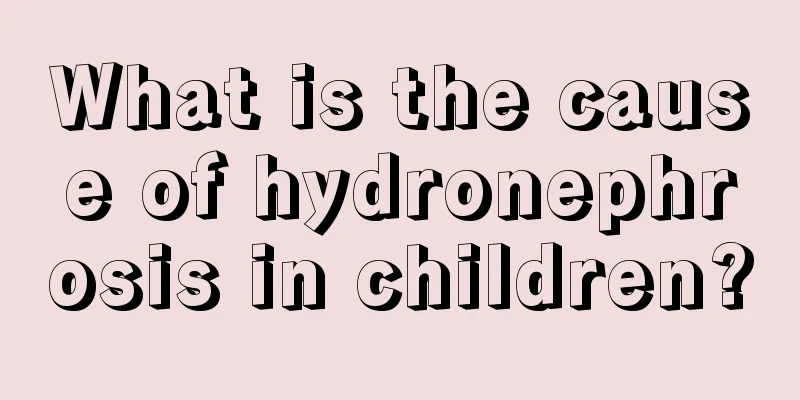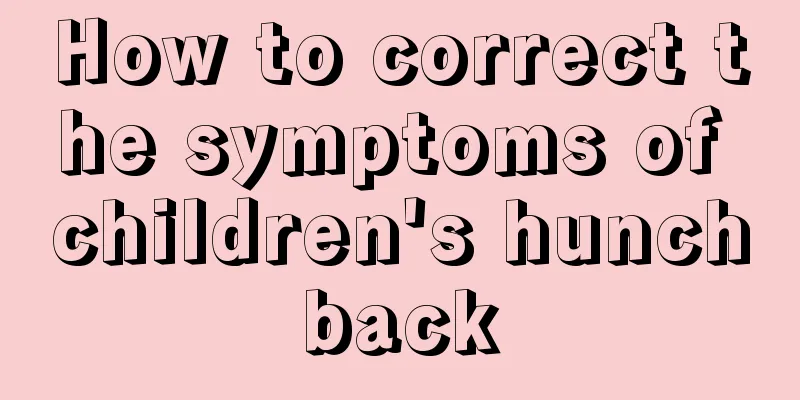What is the cause of hydronephrosis in children?

|
Hydronephrosis is a common disease in children, but many parents do not know why their children have hydronephrosis. In fact, hydronephrosis in children is a common disease, and there are relatively comprehensive treatment methods. As long as the cause is treated, the child can recover. Therefore, parents should understand the causes of hydronephrosis in children to avoid detours in treatment. To this end, let’s understand the causes of hydronephrosis in children. Hydronephrosis is mainly caused by two diseases: 1. Ureteral obstruction: This is a common disease that causes hydronephrosis in the kidney. The reason is that a small section of the ureter becomes narrow and causes obstruction, which makes it difficult for urine in the kidney to flow to the bladder and stagnate in the kidney. Usually, hydronephrosis can be improved by simply removing a narrow section of the ureter and reconnecting it to keep the ureter open. 2. Urine reflux: Under normal circumstances, urine flows from the kidneys through the ureters to the bladder and then is excreted from the body; urine reflux is an abnormal phenomenon in which urine flows back from the bladder into the ureters and even flows back into the kidneys. At this time, the kidneys will have urine ready to flow into the bladder, as well as urine flowing back from the bladder. At this time, there will be too much water in the kidneys, causing hydronephrosis. Because urinary reflux in children is a congenital disease, most patients have no symptoms and do not feel pain. However, by the time symptoms appear, the kidneys may have already been infected. The age of infection ranges from a few months old to teenagers. However, kidney damage does not occur only when there is infection. Even if there is no infection, the kidneys may still be slowly damaged. Children's kidneys are not very mature. Each infection will destroy part of their kidney function, and the damaged kidney function will never recover. For example, this infection may destroy 10% and the next one may destroy 20%. By the time they grow up, they may only have 50% of the normal function left. treat 1. Remove the cause and relieve the obstruction. 2. If the condition is too bad or the cause is complicated, percutaneous nephrostomy can be performed to drain the kidney. 3. Severe hydronephrosis or pyonephrosis, nephrectomy is performed if the contralateral kidney function is good. 4. For those who cannot undergo surgical resection, double "T" tubes or stents should be placed. 5. The purpose of medication is mainly to prevent and control infection before and after surgery. Use drugs that have no or little damage to renal function as much as possible. The above is an introduction to the causes and treatments of hydronephrosis in children. It should be noted here that hydronephrosis in children can be prevented. The best preventive measure is to prevent it according to the cause, which will be most effective. In addition, if a child has hydronephrosis, the original diet needs to be changed to a diet that is conducive to recovery from the disease, which is generally light, nutritious and highly targeted. |
<<: What causes knee pain in children?
>>: One thing you must tell your children, you may not even know
Recommend
Green and foamy stool in children
If a child passes green stool with some small bub...
What to do if a child has enlarged nasal glands
It is said that children are the hope of the moth...
How to supplement children's vitamin D deficiency
Children's physical health is of great concer...
Why is my 2-year-old baby's gums red and swollen?
Children are the treasures of the family, and all...
Correction of crooked neck of baby
Many people know that babies’ bodies are very fra...
What to do if your child has precocious puberty
Many parents may not know much about precocious p...
What are the dangers of adenoids hypertrophy in children?
In recent years, adenoids hypertrophy is a common...
Can babies eat mangoes when they have diarrhea?
Babies' bodies are generally fragile, so if t...
Eight taboos in parent-child games with children
I have an article titled "Parent-child games...
Is MRI harmful to children?
Magnetic resonance imaging is a relatively common...
What are the treatments for cerebral palsy in children?
Cerebral palsy is a disease that endangers human ...
What food is good for babies in winter?
The health of babies is a matter of great concern...
What to do if you have congenital skull deformity?
We often see many pregnant women who have no choi...
Ways to improve memory in children
I believe that every mother regards our own child...
What are the signs that your baby's laryngeal cartilage is getting better?
Laryngeal cartilage is a part that people almost ...









